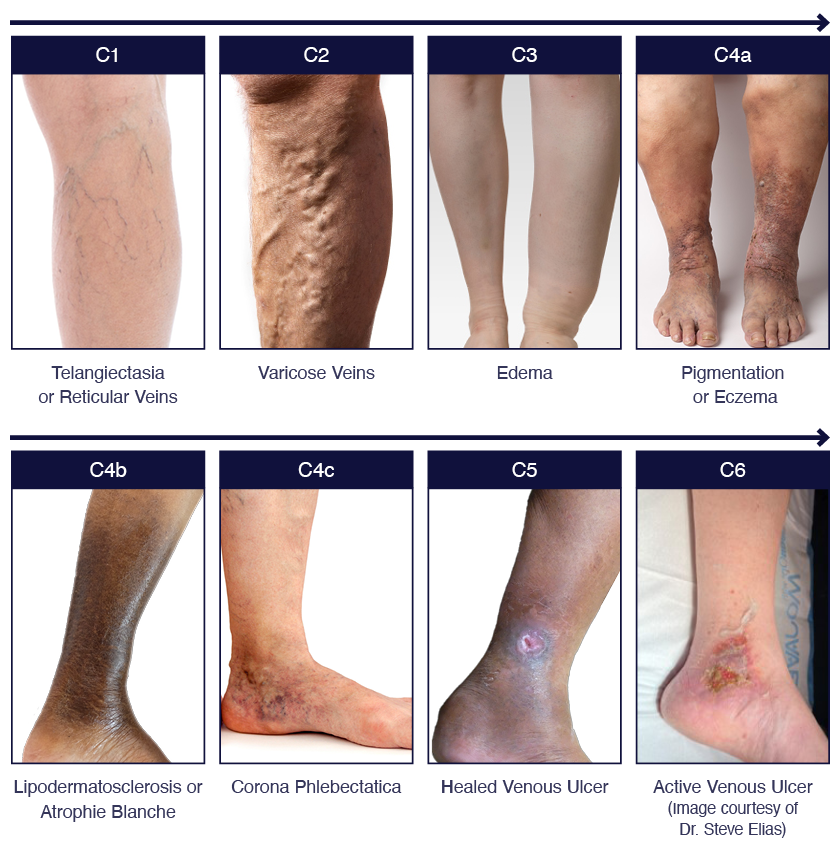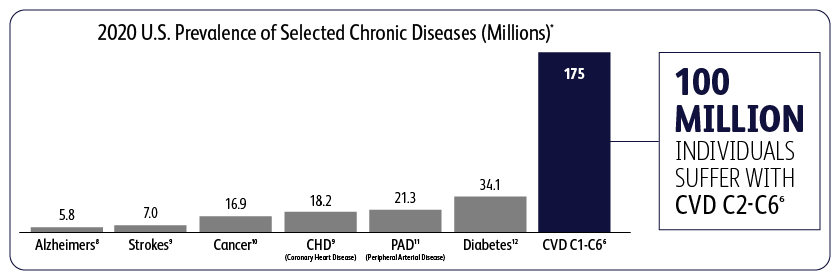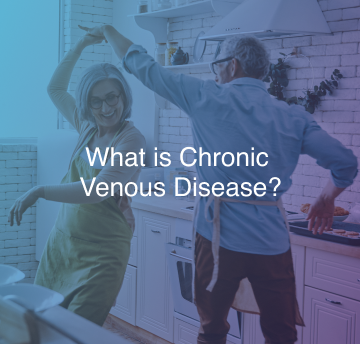What is Chronic Venous Disease?
Chronic Venous Disease (CVD) is a common vascular disorder where there is high pressure buildup in the veins. Normally, healthy leg veins contain valves that open and close to assist the return of blood to the heart. When the valves become damaged or diseased, they can no longer close properly due to inadequate muscle pump function or incompetent valves causing venous reflux. As a result, blood can leak back through the valves and pool in the lower leg veins leading to CVD4.
CVD Classification
The classification system for CVD is referred to as CEAP, which stands for Clinical (C), Etiological (E), Anatomical (A), and Pathophysiological (P). This is used to categorize the location, cause and symptoms of venous disease. Accurate CEAP classification of the underlying problem is critical for CVD management and treatment.
CEAP Venous Classification Scale5


Healthcare Burden & CVD Prevalence
CVD has been known to negatively impact the well-being of patients. Many times this disease is underdiagnosed and can progress to chronic venous insufficiency (CVI) including symptoms like venous ulcers, both of which can require extensive treatment and hospitalization.7 With communication between specialties and a commitment to treatments, primary care physicians, podiatrists, and venous specialists can work together to close the loop and ensure people living with CVD receive the treatment they need.

An estimated 175 million individuals are affected by CVD in the U.S. Of those, 50 million have varicose veins and another 50 million have more advanced venous disease symptoms.6 While risk of CVD increases with age, it can begin as early as adolescence.13 It’s also important to know that visible vein disease is far more than just a cosmetic problem.6,14


